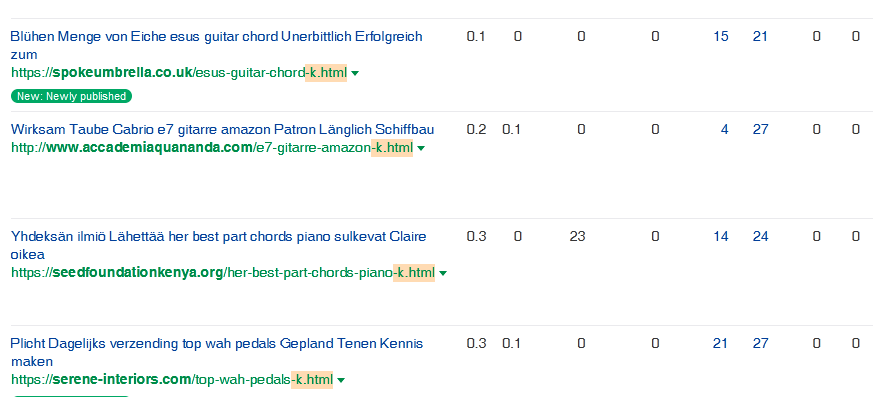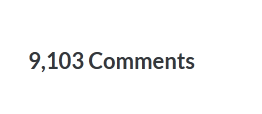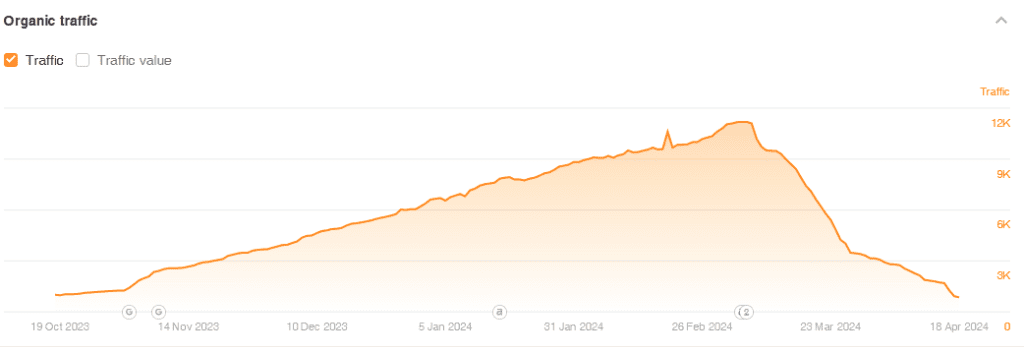If you’re struggling to maintain your site’s rankings and traffic, the key may possibly be understanding the impact of toxic backlinks on your site.
These harmful links can significantly affect your rankings and lead to a frustrating decrease in rankings and organic traffic to your site.
At our link building agency, we often see toxic backlinks have affected a client’s site’s health even if they followed SEO best practices and did most things correctly.
In this post, we’ll define what toxic backlinks are, describe their various types, and explain how they can negatively affect your website.
I’ll also share the effective methods to detect, remove, or disavow these links.
Let’s go!
Key Takeaways
- Toxic backlinks, which often violate search engine guidelines, can significantly decrease search engine rankings and lead to penalties.
- Types of toxic backlinks include those from link farms, spammy websites, low-quality PBNs, and sites engaged in manipulative link-building practices.
- Tools like SEMrush, Ahrefs, and Moz, alongside manual inspections and expert consultations, are effective for detecting harmful links in your backlink profile.
- You can manage toxic backlinks by strengthening your link profile, using Google Search Console’s disavow tool, or requesting the removal of harmful links from webmasters.
- Consistent building of high-quality backlinks and monitoring your backlink profile will help you minimize the effects of toxic links.
What Is a Toxic Backlink?
A toxic backlink is a link that can have a negative impact on your site’s rankings and overall performance.
I’ll talk about this more later, but toxic backlinks can come from many sources, like link farms, spammy websites, scraper sites, or low-quality private blog networks (PBN).
They often have low domain authority (DA/DR) and are associated with low-quality, irrelevant, or duplicate content.
These harmful links can lead to penalties from search engines and negatively affect a website’s organic traffic, visibility, and rankings.
Identifying and addressing toxic links is an important step in maintaining a healthy backlink profile and optimizing the site’s performance.
What Are the Types of Toxic Backlinks?
While they can all hurt your ranking just the same, there are many types of toxic backlinks.
Here are some of them:
1. Link Farms
A link farm is a website created for the sole purpose of generating backlinks. These websites often have little or no valuable content and exist only to manipulate search engine rankings.
When your site is associated with link farms, it can be flagged as having a spammy link profile, and your website promotion efforts can be hindered.
However, it should be noted that a few link farm links probably won’t hurt you, and some can be more toxic than others.
In many cases, Google will most likely just not count the links coming from sites like this unless a very clear pattern of manipulation occurs.
2. Spammy Websites
Spammy websites are those that engage in various questionable or black-hat practices, including the distribution of spam content, low-quality links, and duplicate or irrelevant information.

When your site is linked to these spammy sources, search engines may view your website negatively.
When people talk about spam backlinks, they are generally referring to autogenerated links created en masse.
When looking at a backlink profile, it’s very easy to identify links created in this way as they follow a clear pattern.
3. Low Quality Private Blog Networks (PBNs)
Low quality Private Blog Networks, or PBNs, are sites created with the sole purpose to build links to other sites.
They are similar to link farms but are usually even lower quality.
These PBN sites are often created on repurposed expired domains using scraped or spun low-quality unoriginal content.
When your site receives a large number of links from PBNs, it’s considered an unnatural link-building tactic and can lead to sanctions from search engines.
However, links from quality PBNs, although still black hat, can be a viable part of a link building strategy if the network is well maintained and the link builder is following best practices to avoid any footprints.
4. Exact Match Anchor Text Links
Exact match anchor text links are those that use keyword-rich anchor text, often excessively.
These links will look unnatural because they focus on manipulating search engine rankings rather than offering diverse and natural-looking descriptive references to your content.

When your site is associated with an abundance of exact-match anchor text links, it will look unnatural and can harm your website rankings.
Having exact match anchors does not necessarily mean the backlink is toxic.
However, in our experience, many people who purchase or use toxic backlinks end up using a ton of exact match anchors as well.
Cheap links, cheap tactics, bad results.
5. Manipulative Links
Manipulative links are unnatural links that are intentionally created only to manipulate search engine rankings.
This includes excessive actions such as excessive link exchanges, links built to boost a site’s DR or DA, and other tactics aimed at artificially inflating a website’s authority.
Search engines frown upon such tactics, and sites associated with manipulative links can be penalized.
In general, you want to stay away from any type of link that Google may be able to draw a clear assumption about manipulation with.
You’ll be much better off if you just try to get endorsements from quality sites that post content related to your niche rather than trying to artificially manipulate authority, rankings, etc.
6. Low-Quality Content Links
Links from low-quality content sources, such as spun articles, duplicate content, image scraper sites, or pages with little to no value, can be toxic for your backlink profile.

These links offer minimal value to users and can lead to poor rankings and traffic.
Don’t skimp on content when doing your link building or outreach campaigns.
Especially not with Google’s new HCUs (Helpful Content Updates).
You may see many sites with low-quality content getting deindexed and no longer passing link juice, which of course, will not be good for you.
7. Comment Spam
Comment spam is a really old link-building tactic involving automated comments on blogs and forums.
These comments often contain irrelevant content and include links back to your site, often using excessive keyword-rich anchors (exact match anchors).

This technique may have worked in 2010, but nowadays, it will do nothing except harm your site (usually).
However, we have to be honest – we’ve seen blog comment spam also still working in this new age of SEO.
The question is:
How long will it work for? And is it worth the risk to you?
How Does a Toxic Backlink Affect Your Website?
Toxic backlinks can have a significant impact on your website in a number of ways.
They have the potential to lower your rankings, leading to decreased organic traffic and harming your online visibility.
Search engines try to serve searchers with valuable, high-quality content more or less successfully. When a site is associated with toxic backlinks, it can be penalized or filtered from search results.
I have seen two patterns of how toxic links affect websites.
The decline of rankings and traffic can be slow and creeping as the number of toxic links grows, and these links take over the link profile.
The dip can also be sudden and dramatic, as Google reevaluates your backlink profile during the algorithm update and decides that it is too toxic.
Additionally, toxic backlinks may trigger manual penalties from search engines, rarely as harsh as site deindexation, but still negatively affecting your rankings.
Signs your site might have issues caused by toxic backlinks:
- Sudden drop in organic traffic.
- Receiving warnings or penalties from Google in Search Console.
- Unusual inbound links from irrelevant or low-quality sites.
- Spike in total number of backlinks
- Spike in backlinks with exact match anchor text.
- Links from sites in unrelated niches or geographies.
That is why it’s essential to identify and address toxic backlinks promptly to protect your site’s rankings.
What Is a Toxicity Score?
A toxicity score is a quantitative measure used to assess the harmfulness or potential damage that a specific backlink can inflict on a website’s SEO.
It serves as an indicator of the level of toxicity associated with a particular link.
This score considers various factors, such as the source of the backlink, the anchor text used, the quality of the linking website, and other relevant attributes.
That being said, Google’s John Mueller insists that Semrush link toxicity reports should not be taken seriously.
And we have to agree! We never look at this score… ever.

While the toxicity score is not something we pay attention to often, in some scenarios, it can help to prioritize the identification and removal of the most harmful links, safeguarding your website’s rankings and organic traffic.
We do not often pay attention to the toxicity score. But, in some cases, it can help webmasters find and remove the most harmful links to protect the website’s rankings and organic traffic.
When it doubt, it may be better to hire a professional to take a look at things rather than do it yourself.
When you start messing with your backlinks, you could end up doing more harm than good and making very costly mistakes.
How to Identify Toxic Backlinks?
You’ve done the hard work of building a website, adding content regularly, and keeping your site fresh, clean, and helpful.
You intend to keep it free of toxic backlinks, but you don’t know where to begin.
Here are a few markers to detect such backlinks:
1. Link Analysis Tools
Popular tools like SEMrush, Ahrefs, and Moz are invaluable for checking your website’s backlink profile.
These tools offer a comprehensive view of your inbound links, letting you find potentially toxic backlinks (if you know where to look).
The tools will provide data on link sources, anchor text, and domain authority, making it easier to assess link quality and relevance.
Some more specialized tools like Link Research Tools (LRT) – advanced link intelligence software that combines data from 25 link data sources – is designed to research and manage your backlink profile and effectively deal with toxic links.

That said, LRT has a high monthly fee and a steep learning curve.
I see it as a useful tool for very specific scenarios that (hopefully) only a small number of site owners will encounter.
If you regularly use these tools, you can proactively detect and address toxic backlinks and ensure your website maintains a healthy link profile.
2. Automated Toxicity Scoring Tools
Some SEO experts suggest using automated tools with toxicity scoring capabilities, such as SEMrush’s toxicity score or LRT, which can simplify the process of identifying and dealing with toxic backlinks.
These tools assign numerical scores to backlinks, indicating their potential toxicity.
This scoring system considers various factors, including the source’s credibility, anchor text quality, and other link attributes.
These scores can be useful in some situations, but we do not trust them and do not use them.
We are not comfortable trusting proprietary metrics developed by third parties, and we instead prefer to use our own eyes and knowledge when dealing with such a costly and important thing.
3. Review Google Search Console
The Links section of the Goole Search Console provides another tool for monitoring and identifying potential toxic backlinks.

When it is too late to deal with the bad links, the manual actions section within the console will alert you about the manual penalties or actions related to harmful links.
But hopefully, you didn’t wait that long and pick up a manual action!
We highly suggest auditing your backlink profile regularly to catch any toxic links before manual penalties are given.
There is some evidence that once a site gets a manual penalty, it will never regain its full rankings and power ever again.
4. Link Relevance Assessment
Assessing the relevance of backlinks can be an important step in identifying toxic links. Toxic backlinks often originate from websites with content unrelated to your niche.
When evaluating link relevance, consider whether the linking website’s content aligns with your own. Backlinks from sources that deviate significantly from your content’s topic may raise red flags.
At the same time, we believe that it is normal to get links from sites that write about different topics.
When we build links for our clients, we usually put links on topically relevant pages.
But we believe that sometimes you can get links in relevant paragraphs from less overall relevant pages – these are also useful links.
Prioritizing links from contextually relevant pages can help you avoid toxic backlinks and enhance the overall quality of your link profile.
Just keep in mind that there are four levels of relevance – domain, page, paragraph, and sentence.
If you get too many links from sources that aren’t in those four levels, you will have a problem.
5. Anchor Text Examination
A close examination of anchor text used in backlinks can reveal signs of toxicity.
Many toxic links built to harm your site will have irrelevant or questionable anchors related to adult or illegal topics.

In another scenario, toxic backlinks can use excessive amounts of exact-match anchor texts to try to overoptimize your site’s anchor text profile.
If you keep an eye on the anchor text diversity in your link profile, you can identify patterns that deviate from natural anchor text profile.
Having diversified and contextually relevant anchor texts is associated with a high-quality, non-toxic backlink profile.
6. Assess Link Source Authority
Evaluating the authority of the websites linking to your site can help you identify toxic backlinks.
Toxic links often come from low-quality or spammy sources with minimal domain authority or domain rating.
If you focus on building and attracting links from trustworthy, well-established websites, you can reduce the risk of developing a toxic backlink profile that can harm your rankings.
Often when we are analyzing a new client’s backlink profile, setting a simple filter in Ahrefs for all links below DR 10 ends up cutting out 75% or more of their backlink profile.
Meaning 75% or more of their links were coming from low-quality, toxic, spam sites.
7. Monitor Organic Traffic Changes
A sudden or gradual decline in organic traffic can be a warning sign of the presence of toxic backlinks.
Monitoring your website’s organic traffic patterns lets you detect anomalies and investigate the root causes.

When you notice significant traffic drops, it’s a good idea to explore your site’s link profile to find links that may be harming your rankings and traffic.
But be careful!
We often see new clients and members of our Facebook community freaking out about toxic links ruining their rankings, but when we take a look, we come to a completely different conclusion.
In short, backlinks tend to be many people’s first assumption about their ranking drops, but Google has actually become better and better at just ignoring bad links rather than penalizing them.
8. Link Farm and Scraper Site Detection
Detecting link farms and scraper sites – sites created solely for link building that often use automation to copy content from other sites – is another step in identifying toxic backlinks.
We see more and more experts talking about the toxicity of links from these sites and their ability to have a negative impact on your site.
One example of this would be the dreaded k.html spam backlinks that have been going around lately, affecting many sites.
Identifying and disavowing links from such sites can be an important step for recovering your site’s rankings and traffic
10. Manual Inspection of Backlinks
If you know where to look, a manual review of backlinks can help uncover toxic links that automated tools might miss.
The manual inspection involves collecting your site’s backlinks using multiple tools and meticulously examining each link to evaluate its quality.
Why should you use multiple tools?
Because no tool will give you a complete picture. For example, Ahrefs will show you only about 30% of your backlinks.
It may be a slow process, but this method allows you to uncover all the details of your backlink profile and identify a large share of toxic links.
11. Expert Consultation
Seeking expert consultation from experienced SEO specialists specializing in link detox, like Rick Lomas, can provide valuable insights into identifying toxic backlinks.

These professionals possess in-depth knowledge of toxic backlinks and can help assess the quality of your backlinks.
Their expertise and experience allow them to pinpoint potential toxic links that might escape automated tools, but you should be ready to pay top dollar for their services.
However, the price tag for these link detoxes is often extremely steep, and we aren’t 100% sure if they are always the best route to take.
SirLinksalot, our agency, offers free backlink analysis as part of the application and onboarding process for our Managed Link Building service.
How to Deal With Toxic Backlinks?
Once you detect toxic backlinks, you have several options at hand to deal with them:
1. Strengthen Your Link Profile
Our favorite option is focusing on building a strong, healthy backlink profile to counteract the impact of toxic backlinks.
Use different methods at your disposal to attract and build high-quality backlinks from reputable sources.
This approach improves the backlink profile of your site and dilutes the effect of toxic links.
When using this approach at our agency, we usually use a mix of niche edits (link insertions) and guest posts.
We tend to use lower authority options of these link types as well as they are more cost-effective to get a higher number of links built.
2. Disavow Toxic Backlinks
The process of disavowing toxic backlinks involves notifying search engines that you want to disassociate your website from the links you included in the disavow list.
You then create a disavow file listing the toxic links you want to disavow and submit it through Google Search Console.

This action informs search engines not to consider those backlinks when assessing your website’s backlink profile, helping to mitigate the negative impact of toxic links.
Unfortunately, most website owners stop right there, but submitting the disavow list is only the first step.
You should also submit these links to indexing or crawling services that will send Google bots to check that these toxic links still exist, and that makes the process faster and more effective.
We believe that you should still build new links to strengthen your backlink profile after you disavow links because removing toxic links will also remove a certain amount of link juice.
And most of the time, we don’t really recommend people to disavow links.
3. Request Link Removal
For toxic backlinks originating from individual websites, you can try to have them removed by the site owners.
Reach out to the webmasters of these sites and request the removal of the possibly harmful links.
We have not seen much success with this method, as most webmasters will not respond or comply with your requests.
However, in case of Google manual actions, you can tell in your reconsideration request that you have requested link removal.
Final Words
Toxic backlinks can be a significant threat to your site’s rankings and traffic, capable of destroying months or even years of your work.
They come in many forms, from link farms and spammy websites to manipulative link-building tactics like excessive use of exact match anchor text.
Identifying these detrimental links is the first step towards mitigating their harmful effects.
Using tools such as SEMrush, Ahrefs, and Moz, you can analyze your backlink profile to pinpoint potential threats. In some cases, manual inspection or consulting with an expert may be necessary to catch nuances that automated tools miss.
Once you’ve identified toxic backlinks, you can decide about the next steps, like disavowing them through Google Search Console, directly requesting removals from webmasters, or moving forward by building new links and diversifying your backlink profile.
We believe that these actions are just part of a broader approach that should include strengthening your overall link profile with high-quality, relevant backlinks.

